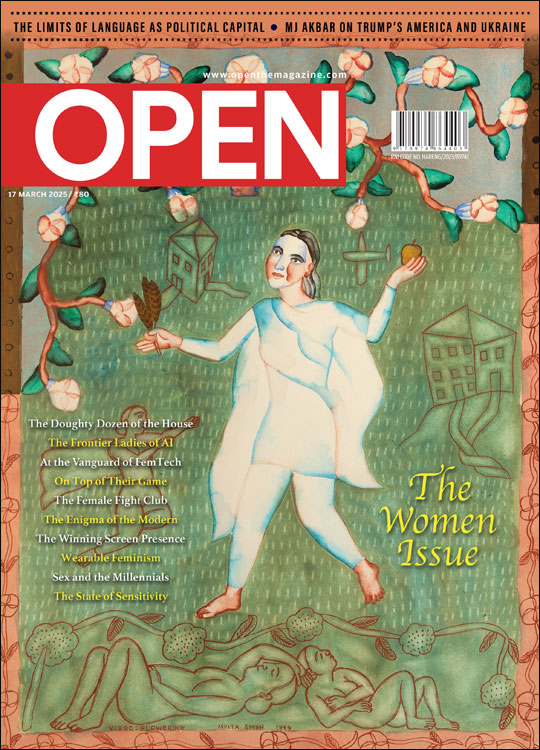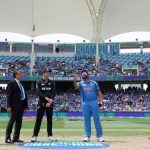The Loneliness of Being Vikramaditya Motwane
The outsider
 Nikhil Taneja
Nikhil Taneja
 Nikhil Taneja
|
08 Mar, 2017
Nikhil Taneja
|
08 Mar, 2017
/wp-content/uploads/2017/03/Motwane1.jpg)
WHEN VIKRAMADITYA MOTWANE’S urban survival thriller, Trapped, releases on March 17th, it would have been three years, nine months and a few days since his last film, Lootera, opened in theatres to critical acclaim. For an industry that churns out 200-plus films every year, most directors of calibre typically release a film every second year, and the more prolific—or fortuitous—ones may even put out a film a year.
This gap between Motwane’s two films has little to do with his calibre; his debut film, the coming-of-age drama Udaan (2010) was officially selected to compete at the Cannes Film Festival’s prestigious Un Certain Regard category, the first Indian film to do so in almost a decade. His second, the heartbreakingly beautiful Lootera, inspired from O Henry’s The Last Leaf, found a place in most year-end ‘Best of’ lists. Today Motwane is known for his painstakingly beautiful frames, which are as talked about as his grasp of storytelling,
His prolificacy isn’t in question either; in the same period, as part of the directors’ collective Phantom Films, he has produced an incredible 11 films (along with Vikas Bahl, Anurag Kashyap and Madhu Mantena) including critical and commercial successes such as Queen, NH10, Masaan and Udta Punjab.
As is the wont of Bollywood, it all comes down to luck, and Motwane has been plagued by a particularly bad stretch over the past four years. In this span he has been attached to a dysfunctional family drama starring Ahana Deol, a thriller, AK vs SK, starring Shahid Kapur, vigilante drama Bhavesh Joshi, first starring Imran Khan, then Siddharth Malhotra, and a superhero drama Chakra, co-created by Stan Lee. While the first film never took off, AK vs SK was shelved after a few days of shooting, and at some point, so was Bhavesh Joshi, as the script was no longer relevant, having been written back in 2011. And so, Trapped— the story about a man locked in an apartment in a newly constructed, empty Mumbai high rise, trying desperately to break free—happened because of and as a reaction to the stalled movies preceding it.
“To be honest, the film was made in anger,” a wistful Motwane recalls in a packed Juhu café. “I had reached a point where I felt responsible towards my crew as they had hung around with me for so long through all those shoots that started and then stopped. I was also tired of just doing ads or prepping for movies. I wanted to shoot something narrative, something that was longer than three days.”
The idea for the film came to him via an email from writer Amit Joshi, and Motwane’s first reaction was, ‘I can do this!’ “It was such a good challenge for all of us,” he says. “It was a great story, easy to make, and I liked that the idea was universal. It could have been set in Bombay, Delhi, Bangalore, Cal, or even Shanghai or America. And after everything that had happened, I just felt that I should jump in.”
Motwane and a minimal cast and crew did just that. Within three weeks of having decided to do the film, he and his crew were shooting a start-to-finish month-long schedule in one location, an unoccupied building in the middle of Parel’s frenetic commercial district. It felt almost like a “student film”, Motwane says with a chuckle.
I believe in characters whose actions speak louder than words, characters who do things alone and quietly… I love making films without too much dialogue
Beyond the fact that a survivor thriller like Trapped has not been done in India, what attracted Motwane was its theme of ‘urban loneliness’. The lead character in the film, Shaurya, played by the very able Rajkummar Rao, is an immigrant in the city, one of the many anonymous people with anonymous jobs who come to Mumbai to find both their calling and themselves. He is completely alone, as there’s no one by way of family to come looking for him if he goes missing. At the start of the film, Shaurya is in a relationship with Noorie (played by Liar’s Dice actress Geetanjali Thapa). But Motwane characterises this relationship as a form of urban loneliness too, in that the two are “alone together”. “When two people like each other in Mumbai, and you see them together at Marine Drive or Juhu Beach or in cabs or trains, both are lonely because it’s only each other that they actually have,” says Motwane. “Their isolation from the city to me was best encapsulated in a scene where the two of them are listening to music on the same pair of earphones in a train. It’s something I’ve seen couples do… and I find that very cute,” he says with a smile.
Motwane talks about loneliness with a certain ease and comfort, and for anyone who has followed his work so far, it’s not tough to see why. Both Udaan and Lootera were films about lonesome, misunderstood characters whose battles were not just with the world outside, but with their own selves in a world that they were trying to find their place in.
In Udaan, the lead character’s isolation and quest to be appreciated by his father was memorably captured in a scene where he smashes his father’s car. In Lootera, the isolation manifests both physically, as Sonakshi Sinha’s character, betrayed in love, lives in seclusion in Dalhousie; and symbolically, as Ranveer Singh’s character takes up the task of painting the last leaf on a tree every day, so as to give hope to the dying woman he loves.
In hindsight, Motwane reveals, he’s always been a bit of a loner himself, and his films may just be a manifestation of that on to the big screen. “I believe in characters whose actions speak louder than words, characters who do things alone and quietly,” he says. “I love making films without too much dialogue. That’s not to say there’s no communication in my films; in fact there’s a lot of it and I really, really enjoy that. But I really get off on silent scenes.” “Udaan has a lot of that, Lootera has a lot of that, Bhavesh (Joshi) also has a lot of that,” he says with a laugh, adding, “And now that I think of it, maybe that’s what attracted me to Trapped as well. I like lonely characters… I find them interesting in cinema, in books, and in general. There’s something about one man versus the world.”
I like lonely characters. I find them interesting in cinema, in books, and in general. There’s something about one man versus the world
On further reflection, Motwane believes this could be because, hailing from a divorced household, he grew up a lot faster than other children his age. He started drinking and smoking weed before his peers did. He tried to fit in with his elder cousins, but was a misfit there too. “I never could fit anywhere, not with them or with my friends,” he says.
Meanwhile, the ‘Bombay’ which Motwane grew up in changed into ‘Mumbai’, and he couldn’t recognise his own city. He characterises his relationship with it as one of “love-hate”. There are parts of the city that he knows like the back of his hand, and there’s Mumbai, a metropolis of indifference. This nagging feeling of being an outsider within one’s own city has stayed with Motwane for much of his life. And as a filmmaker who belongs to that school of filmmaking where God lies in the details and craft is just as important as the story, this sentiment has percolated into his art—and the industry too.
“I still feel like an outsider, even within the industry and film circles,” Motwane admits, “in the sense that my stories are very different from what anybody else is making. I think that’s a good thing because compromising or becoming like everybody else is not going to be a solution to anything. On every story I develop or work on, I soon start feeling that ‘Oh, this has got a very limited audience,’ which I’m quite happy about. I know I can then take them and turn them into something larger and bigger, within the aukaat (stature) of the film.”
Motwane agrees that it may be the producer in him talking about making things ‘bigger’, but the fact is, the movies that he grew up with—the classic cinema of Martin Scorsese, Steven Spielberg or even Quentin Tarantino—are hardly relevant anymore. The last movies of these auteurs—Silence, The BFG and The Hateful Eight, respectively—failed to light up the box office, and the ones before didn’t rake in profits either.
It now seems that with dwindling attention spans of the audience, in the age of Snapchat, the only way to stay relevant is to move on from purist cinema towards a new kind of event cinema, which all modern-day directors from Alfonso Cuarón (Gravity) to Alejandro Inarritu (Birdman) to Christopher Nolan (in every film) seem to be embracing.
Five years ago, Motwane would have been reluctant to agree, but today, having seen the collapse of the mid-budget film that could well have been his strength, he concurs: “You have to grow as a filmmaker… I think every film you make should be an event.” He adds, “The world is not as patient with cinema as it was when I made Udaan, or even Lootera. You have to be conscious of that, and I’m understanding that.”
But all is not lost where commercial Indian cinema is concerned, and Motwane recognises this. As a producer, he’s been part of films like NH10 and Udta Punjab, which challenged the status quo of ‘mainstream sensibilities’ and still worked at the box office. Such risks are inherent to Motwane’s storytelling ability, and it gives him heart that the audience has welcomed them. The fact that Dangal, a film that Motwane believes may not have been made 10 years ago, is the highest grossing film of all time, proves that the audience now accept a certain kind of story—and that perhaps, it’s not a lone fight anymore.
And so, the Trapped director is prepping himself for the next stage of his career, where he wants to liberate himself from his own boundaries, by ‘overstretching’ and ‘overreaching’ and making all kinds of movies, including sci-fi and animation, as well as a sequel to Udaan. He wants to make up to two films a year, and will work on scripts till he is able to achieve that, but at the same time, is keenly aware of the library of his work that he eventually wants to create.
“I feel that there is the here and now, where you go and make films and get successful, and then make more films, but then what? Do you want your films to be seen 15, 20 years from now, do you want a library, in the (Stanley) Kubrick sense of the way, that people value? I do, and I’m conscious of that. So you need to not only challenge yourself, but in some sort of way, challenge your audience too.”
For Motwane, the greatest challenge lies in finding a balance in his work in a way that feeds his creative soul and still appeals to the audience. He calls Trapped his ‘most commercial film’ and believes that with it, and his next film, Bhavesh Joshi, he has identified a way to make his stories “more accessible” and “universal”.
“I have tried to open up my audiences, but at the same time, I have taken exactly the kind of risks in Trapped that I know the audience for this kind of a film would like. So I’m hoping, film by film, the audience grows. Because what’s happening on the commercial spectrum is so heartening that you also feel like extending yourself.” Motwane pauses for a brief moment, and then says with a smile, “Or maybe it’s just maturity, you know.”

/wp-content/uploads/2025/03/Cover-Women-Issue-2025.jpg)













More Columns
Is Trump Really Doing A 'Reverse Kissinger'? Sudeep Paul
Rohit Sharma And Toss Don't Go Well! Short Post
Bitcoin Mania Boost Madhavankutty Pillai